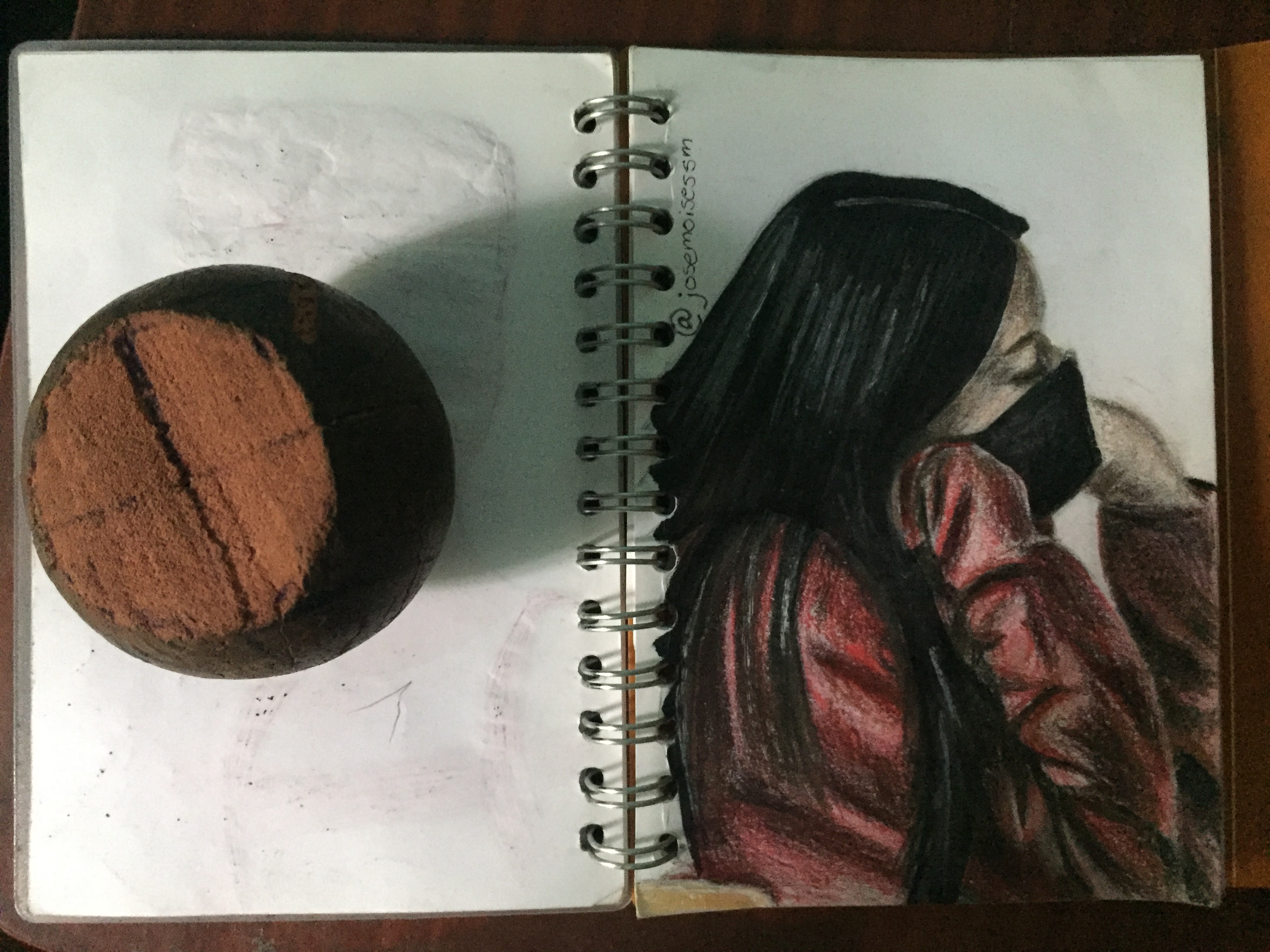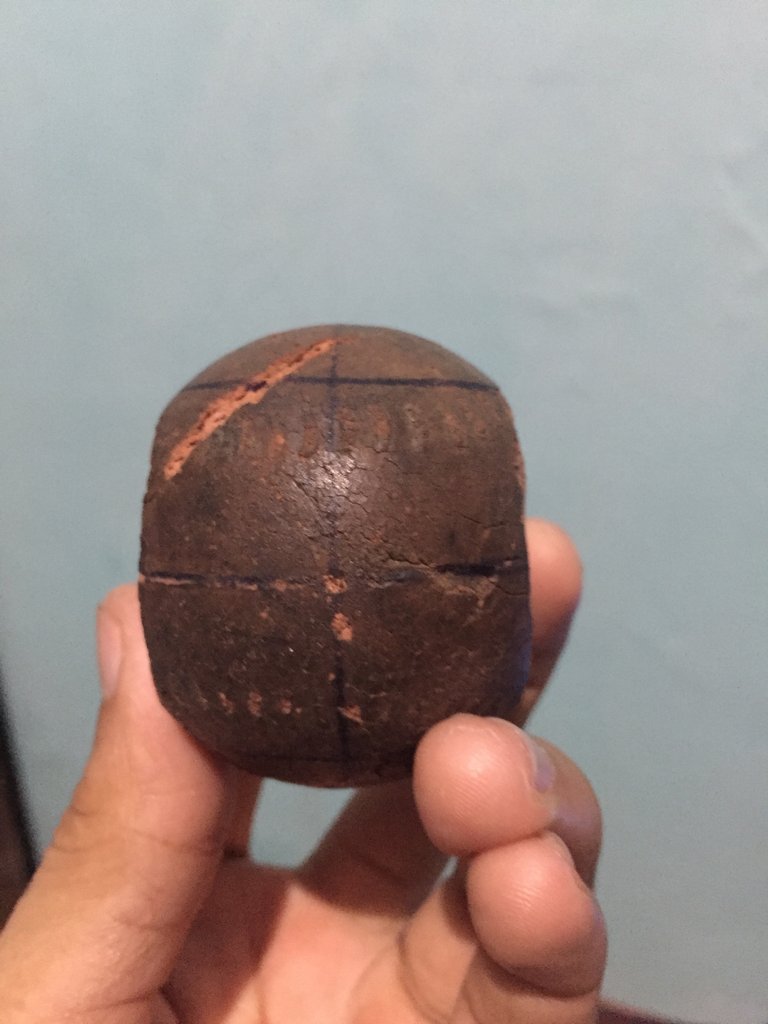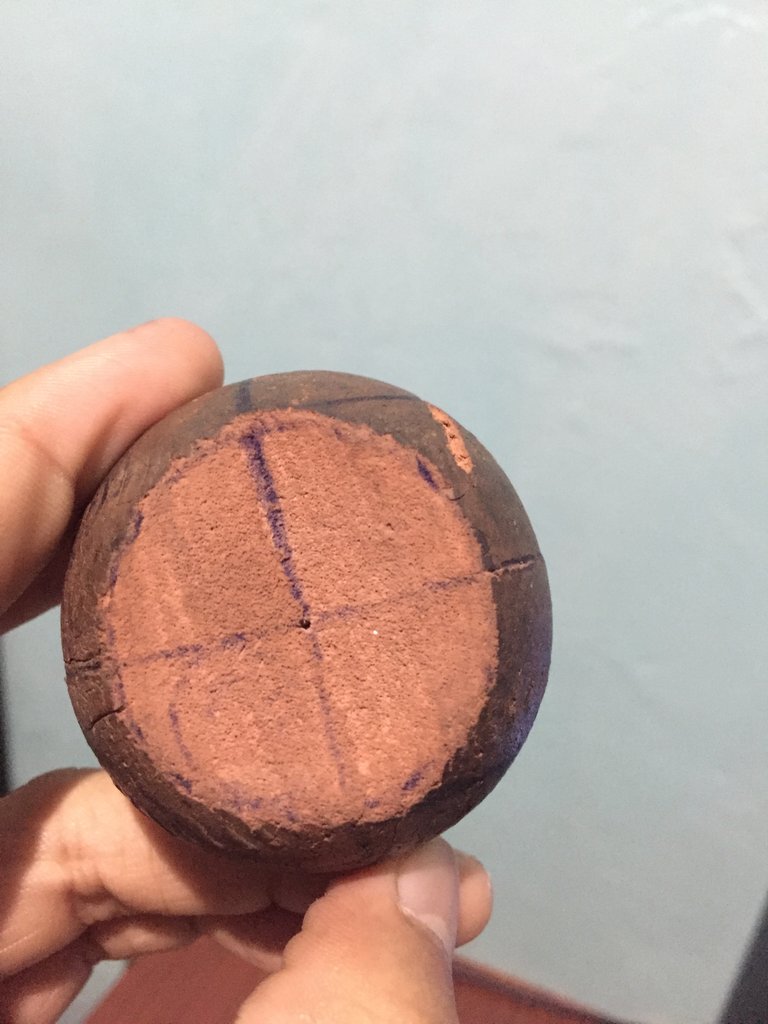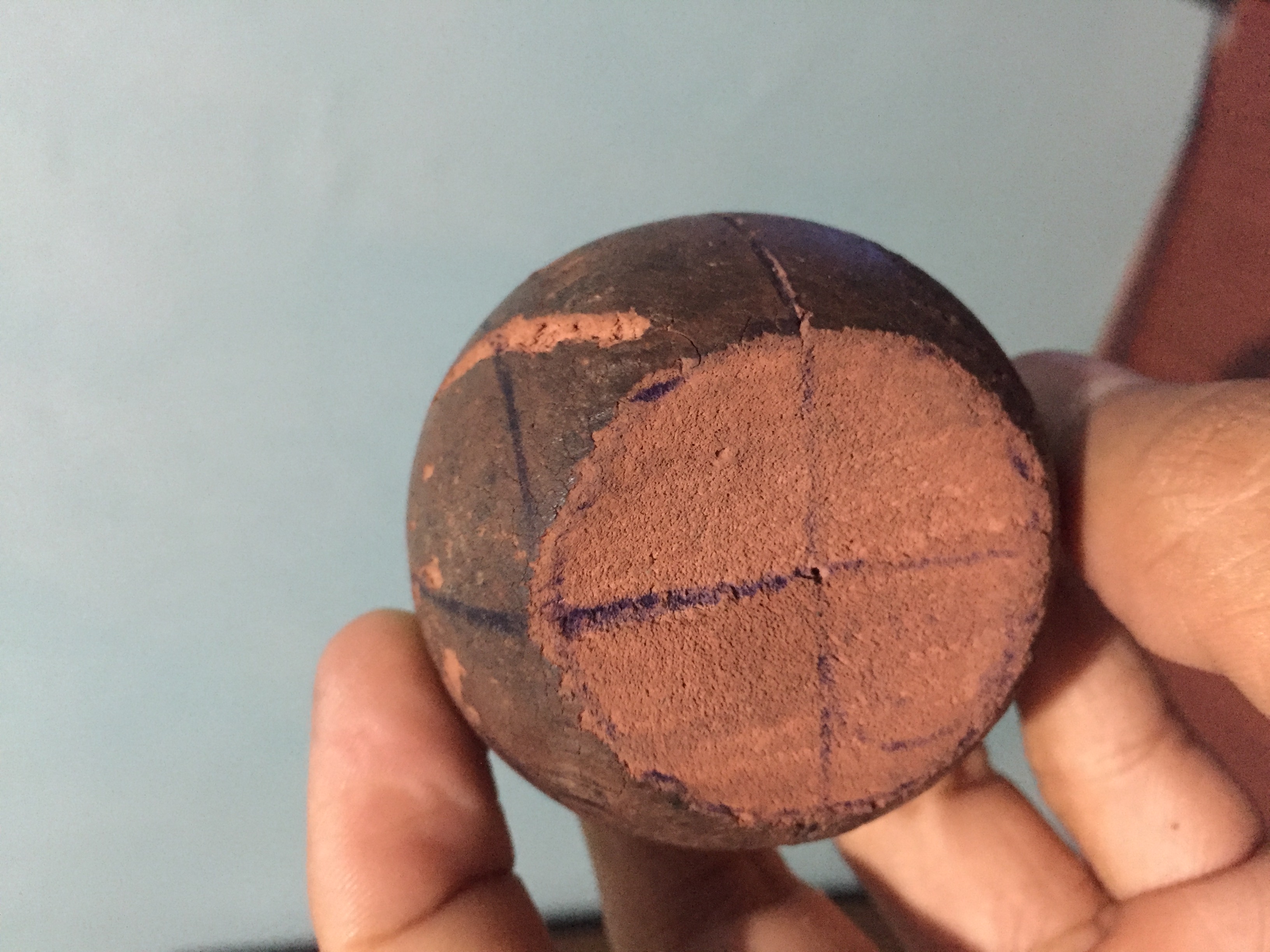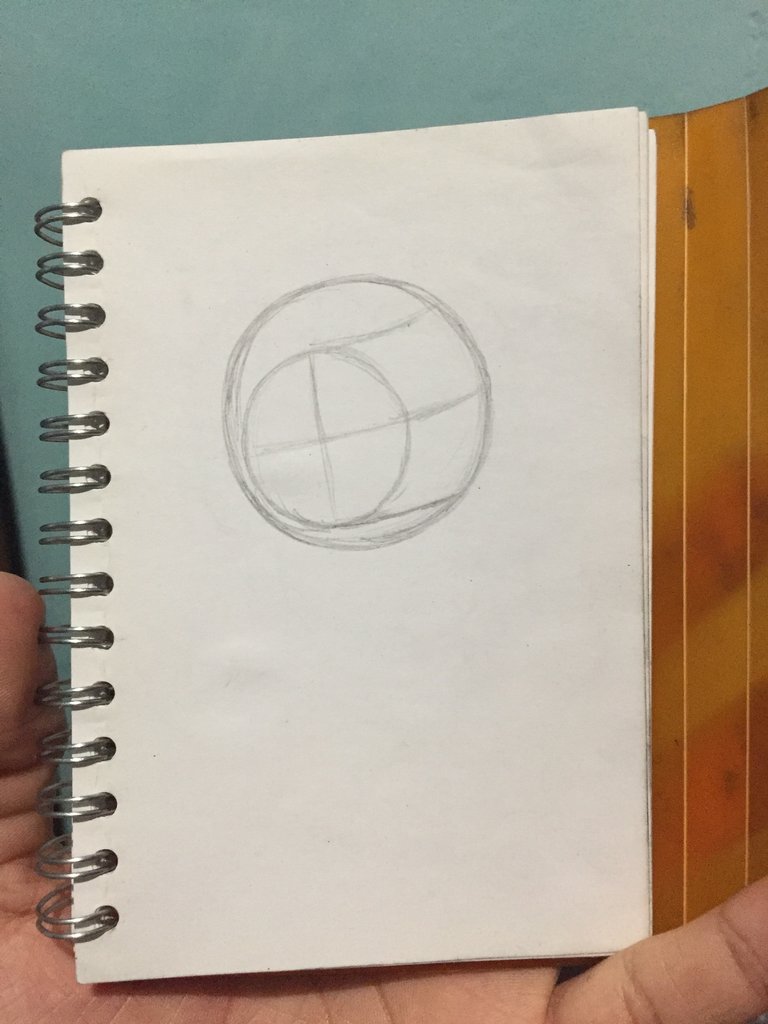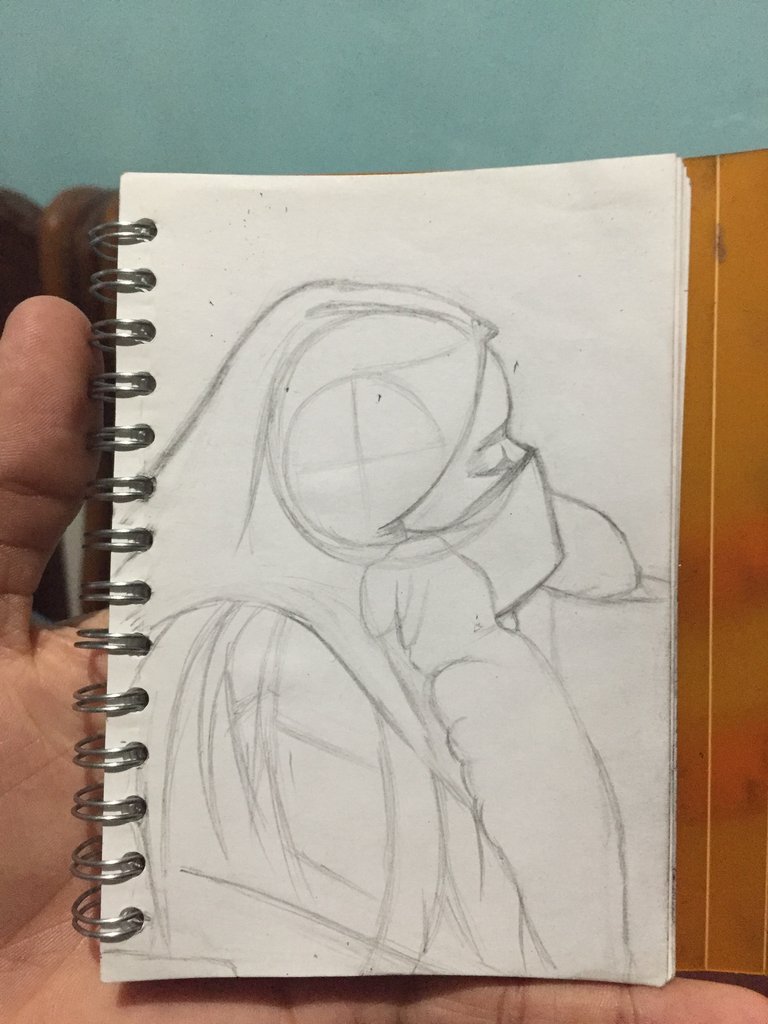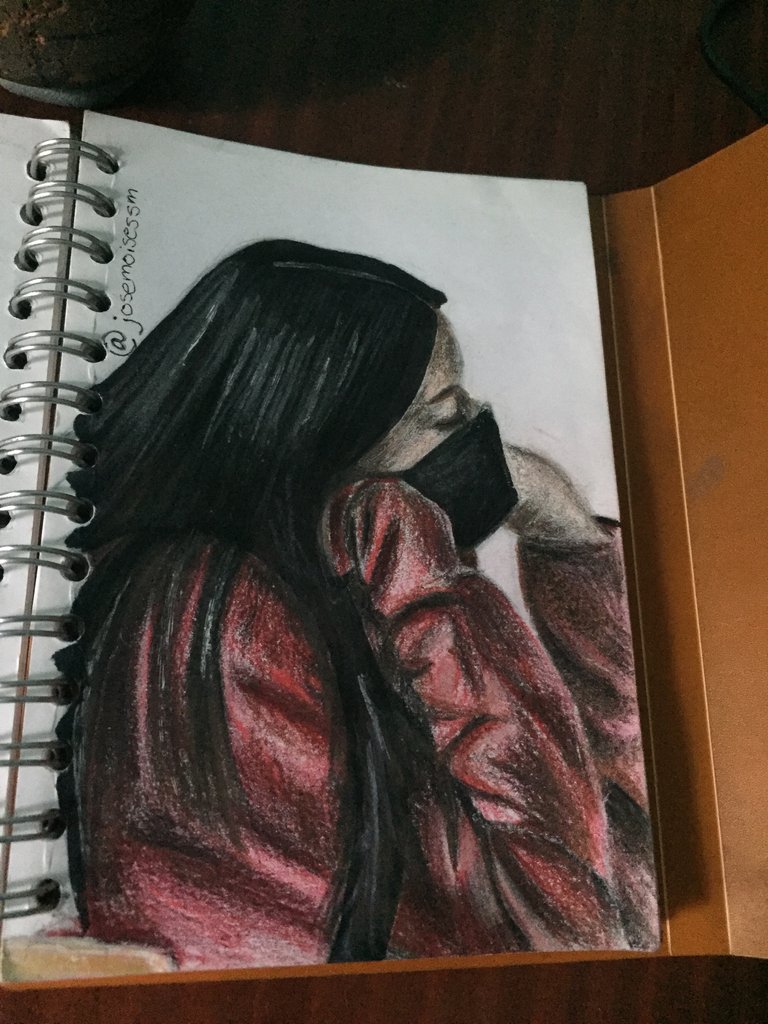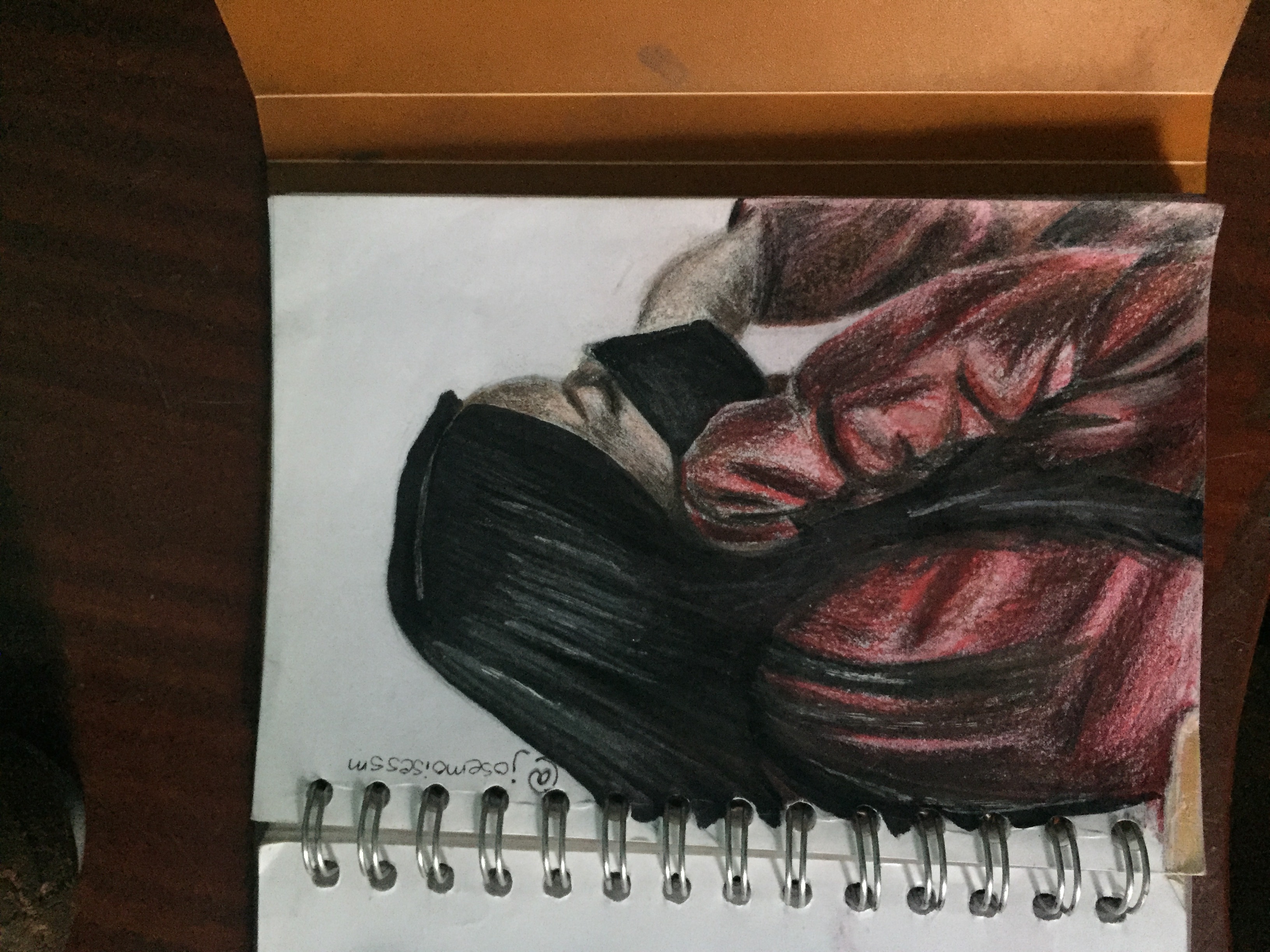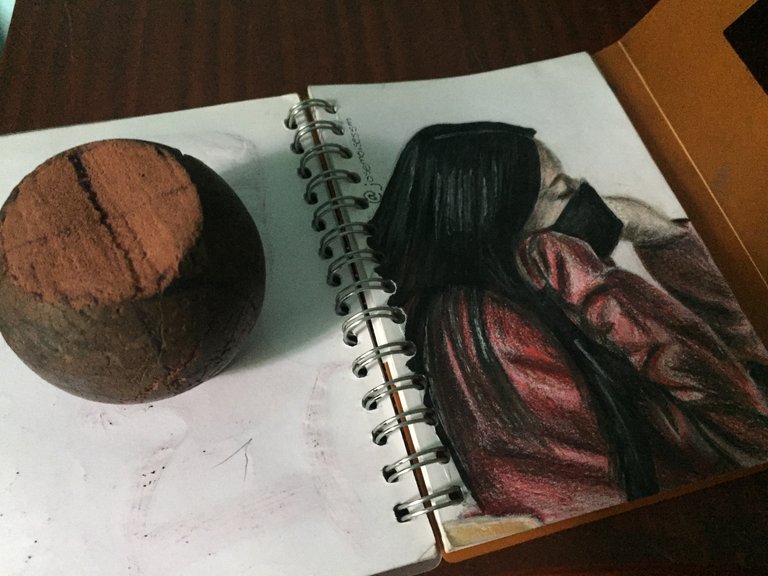Happy and blessed night dear friends of Hive, how are you?
Today I want to explain Andrew Loomis's technique in detail, and how to use the "support" sphere.
First, this ball simulates the human skull, which is cropped on the sides, because this would be the space for the ears and temples, with which we can determine the angles of our models and the spaces between the facial features.
(My ball has a scar)
The first line of the sphere is where the hairline is located, the middle line is for the eyebrows and the last line is where we must place the tip of the nose, of course if we move the sphere the range of inclination and the angle of the face that we are drawing will vary, but for that we have the sphere, to move it and place it in the position that the model has.
The distance between each line has to be the same, and in some cases an extra line (with the same distance as the others) is added to locate the chin. In general, this happens more frequently in female faces, since they do not have a jaw as marked as men, so you always have to measure distances to see if there is a lack or excess space between these 4 important points.
The rest is up to us: Draw the sphere and the 3 main lines as similar as possible, and then proceed to make the jaw, which is almost always like half an octagon, but as always, it depends on each face.
What I like about this technique is that you can draw almost any face, of course, if you have a lot of practice and an eye for measurements.
In this case, she is a friend, who almost never takes off her mask (I only saw her without it once), so I wanted to make her with that.
To make the arms and clothes I took the measurements of the face to compare and get as close as possible to my reference.
To take these measurements, you can measure with your finger and pencil, or with an open compass touching each point, and thus achieve your goal.
The good thing about drawing people with masks is that one saves work when fitting the nose, mouth and other lower details of the face.
The rest was the detailed drawing, which I wanted to do with school colored pencils, because I hadn't used them for a while.
Thank God, I think the drawing turned out very nice, without so much detail, but finally complete
Thanks to all of you for reading and seeing my post, I hope you liked it and it has helped you to use this fabulous technique from Master Loomis.
Anyway, if you have any questions on the subject, I wouldn't mind answering them in the comments.
See you guys ;)
